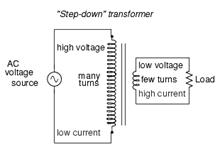 |
АвтоАвтоматизацияАрхитектураАстрономияАудитБиологияБухгалтерияВоенное делоГенетикаГеографияГеологияГосударствоДомДругоеЖурналистика и СМИИзобретательствоИностранные языкиИнформатикаИскусствоИсторияКомпьютерыКулинарияКультураЛексикологияЛитератураЛогикаМаркетингМатематикаМашиностроениеМедицинаМенеджментМеталлы и СваркаМеханикаМузыкаНаселениеОбразованиеОхрана безопасности жизниОхрана ТрудаПедагогикаПолитикаПравоПриборостроениеПрограммированиеПроизводствоПромышленностьПсихологияРадиоРегилияСвязьСоциологияСпортСтандартизацияСтроительствоТехнологииТорговляТуризмФизикаФизиологияФилософияФинансыХимияХозяйствоЦеннообразованиеЧерчениеЭкологияЭконометрикаЭкономикаЭлектроникаЮриспунденкция
Types of Power Supply
There are many types of power supplies. Most are designed to convert high voltage AC mains electricity to a suitable low voltage for electronic circuits and other devices. A power supply has a number of blocks. Each block has a special function.
For example a 5V regulated supply:

· Transformer - steps down high voltage from AC mains to low voltage AC.
· Rectifier - converts AC to DC, but the DC output has ripples.
· Smoothing - smoothes the DC to a small ripple.
Dual Supplies
 Some electronic circuits require a power supply having positive output, negative output and zero volts (0V). This is called a 'dual supply' because it is like two usual supplies connected together as shown in the diagram.
Some electronic circuits require a power supply having positive output, negative output and zero volts (0V). This is called a 'dual supply' because it is like two usual supplies connected together as shown in the diagram.
Dual supplies have three outputs, for example a ±9V supply has +9V, 0V and -9V outputs.
Transformer

The low voltage AC output is suitable for lamps, heaters and special AC motors. It is not suitable for electronic circuits unless they include a rectifier and a smoothing capacitor.
Transformer + Rectifier

The varying DC output is suitable for lamps, heaters and standard motors. It is not suitable for electronic circuits unless they include a smoothing capacitor.
Transformer + Rectifier + Smoothing

The smooth DC output has a small ripple. It is suitable for most electronic circuits.
Text 3
Transformer
 Transformers convert AC electricity from one voltage to another with little loss of power. Transformers work only with AC and this is one of the reasons why mains electricity is AC.
Transformers convert AC electricity from one voltage to another with little loss of power. Transformers work only with AC and this is one of the reasons why mains electricity is AC.
Step-up transformers increase voltage, step-down transformers reduce voltage. Most power supplies use a step-down transformer to reduce the dangerously high mains voltage (230V) to a safe low voltage.
The input coil is called the primary and the output coil is called the secondary. There is no electrical connection between the two coils. The two coils are linked by an alternating magnetic field created in the soft-iron core of the transformer. The two lines in the middle of the circuit symbol represent the core.


Transformers waste very little power on heating. Note that as the voltage is stepped down the current is stepped up.
The ratio of the number of turns on each coil, called the turns ratio, determines the ratio of the voltages. A step-down transformer has a large number of turns on its primary (input) coil which is connected to the high voltage mains supply, and a small number of turns on its secondary (output) coil to give a low output voltage.
turns ratio = Vp = Np
Vs Ns
and
Vs × Is = Vp × Ip
where
Vp = primary (input) voltage
Vs = secondary (output) voltage
Ip = primary (input) current
Is = secondary (output) current
Np = number of turns on primary coil
Ns = number of turns on secondary coil
Text 4
Rectifiers
Поиск по сайту: